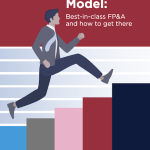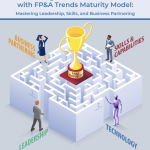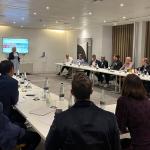The 15th in-person Zurich FP&A Board meeting welcomed 39 FP&A leaders from such companies as Ecolab, Swarovski, Habasit, Lonza, Swissport, Mondelez, R&S, Unilever, Hitachi, La Prairie, Oriflame and many others. We gathered in the premises of Page Executive’s office on May 22nd, 2024, to discuss how to create the transformation roadmap with the FP&A Trends Maturity Model and the challenges faced by FP&A teams on this journey.
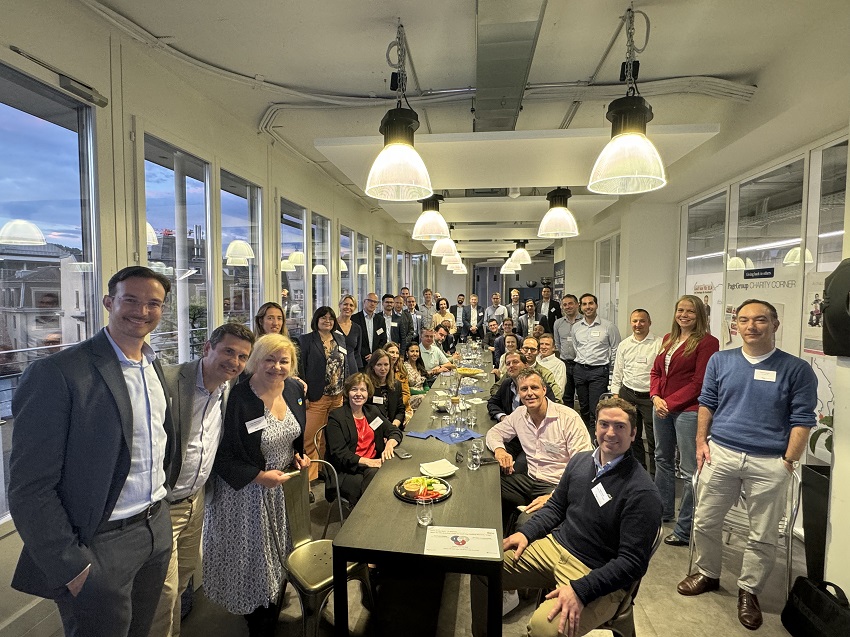
Figure 1: Zurich FP&A Board №15 Participants, May 2024
The event was sponsored by Wolters Kluwer/CCH® Tagetik in partnership with Page Executive.
Introduction
Larysa Melnychuk, Managing Director of the International FP&A Board, opened the meeting by introducing the mission of the FP&A Board and provided an agenda for the evening:
- FP&A Trends Maturity Model general overview
- Six dimensions and five stages of FP&A Maturity
- Moving to the Leading Stage: creating your transformation map
- Group work
- Conclusions and Recommendations
After a short introduction, each attendee shared the main obstacle to FP&A transformation. It was interesting to note similarities in their responses, highlighting major obstacles such as:
- Data accuracy and reliability
- Change Management
- Lack of alignment between stakeholders on the purpose of FP&A processes, as aligning expectations is crucial
- Organisational culture
- Complexity
- Finding the right systems/analytical tools
- Resistance to change
- People (skills)
- Mindset
- Uncertainty
- Standardisation
Larysa also shared insights from other FR&A Board meetings, which were very similar to these.
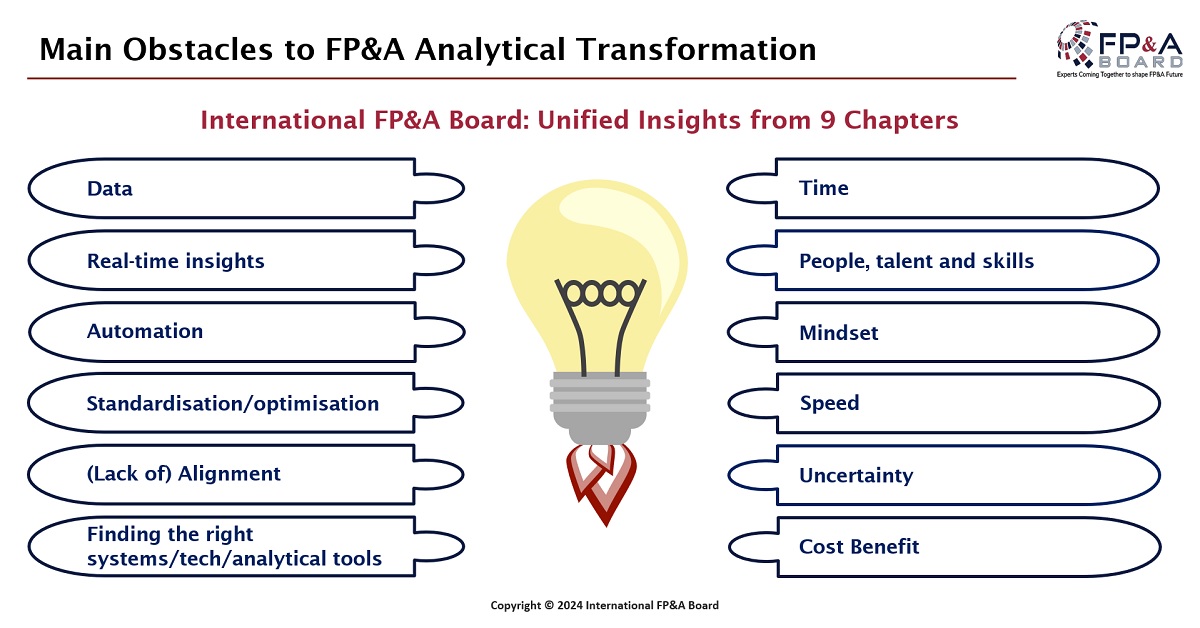
Figure 2
The attendees also participated in a poll about where their organisation is on the FP&A maturity ladder. Most participants appeared at the Developing stage.
The FP&A Trends Maturity Model: Soft and Hard Dimensions
The discussion shifted to the soft and hard dimensions of the FP&A Trends Maturity Model.
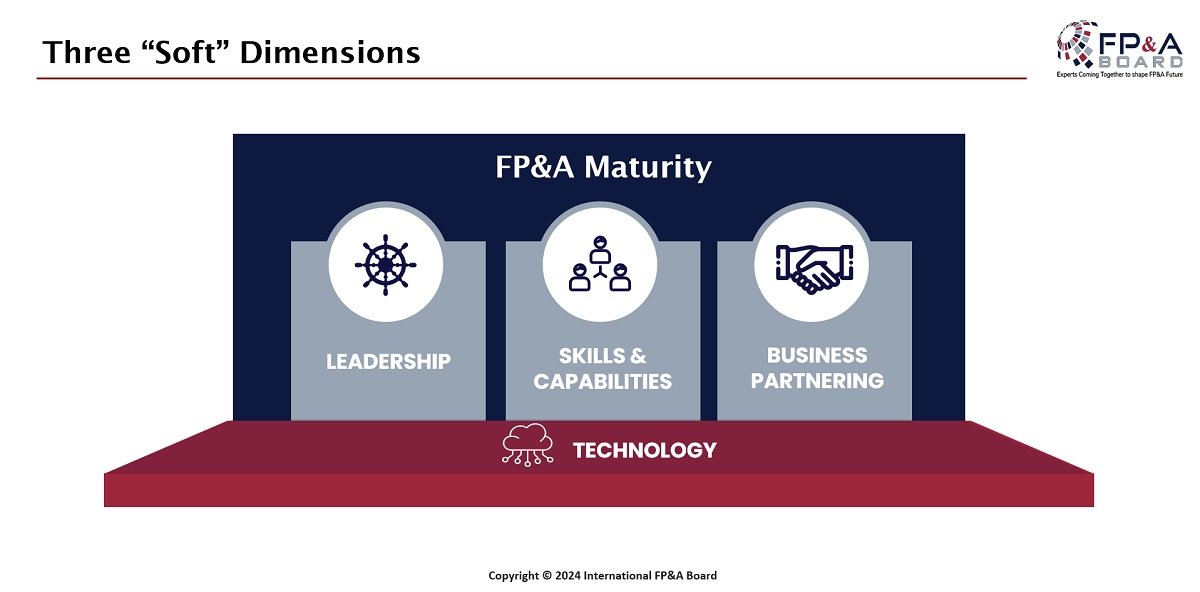
Figure 3
The forum also agreed that a new wave of FP&A leaders influences the entire organisational culture, bringing in a combination of analytical and soft skills.
The participants shared practical experiences in both successful and challenging cases. The ability to ask the right questions and build constructive partnerships with businesses is becoming a more relevant expectation from FP&A teams. However, some organisations still treat FP&A as a purely analytical function.
Probably due to that, we still spend so much time on low-value activities. Larysa presented the slide with the FP&A teams’ time distribution over the years. Data collection and verification still represent almost half of the teams’ time, leaving much room for improvement and focusing on value-adding activities.
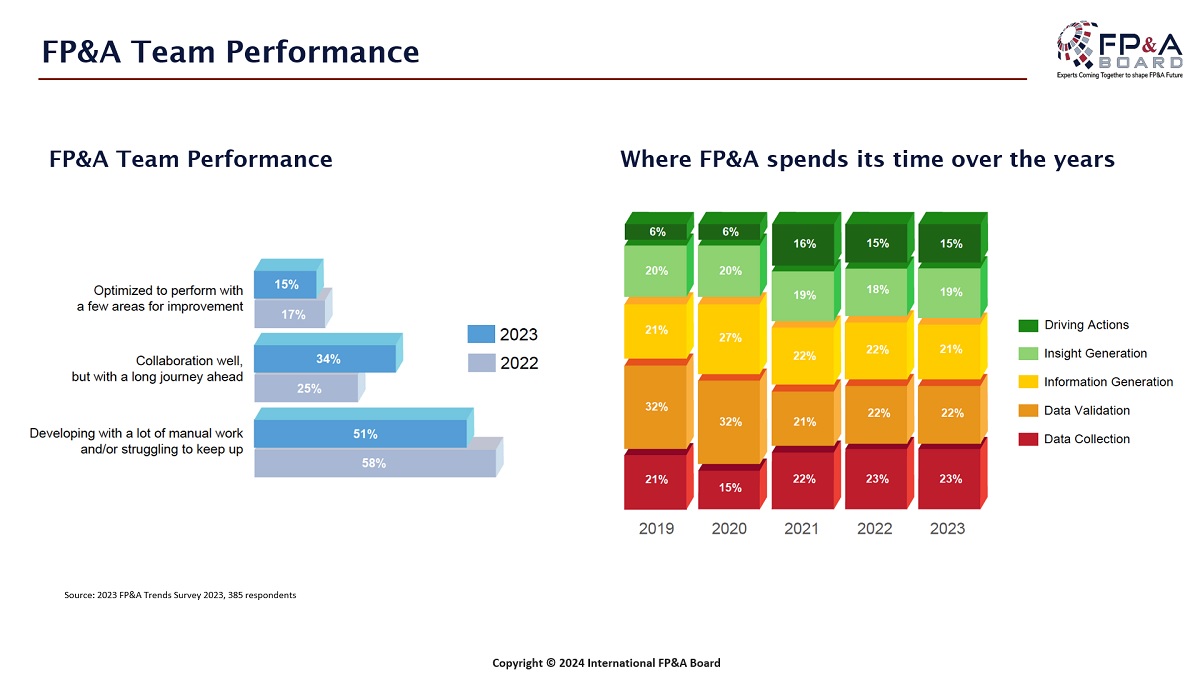
Figure 4
The discussion also revolved around data, systems and processes and technology.
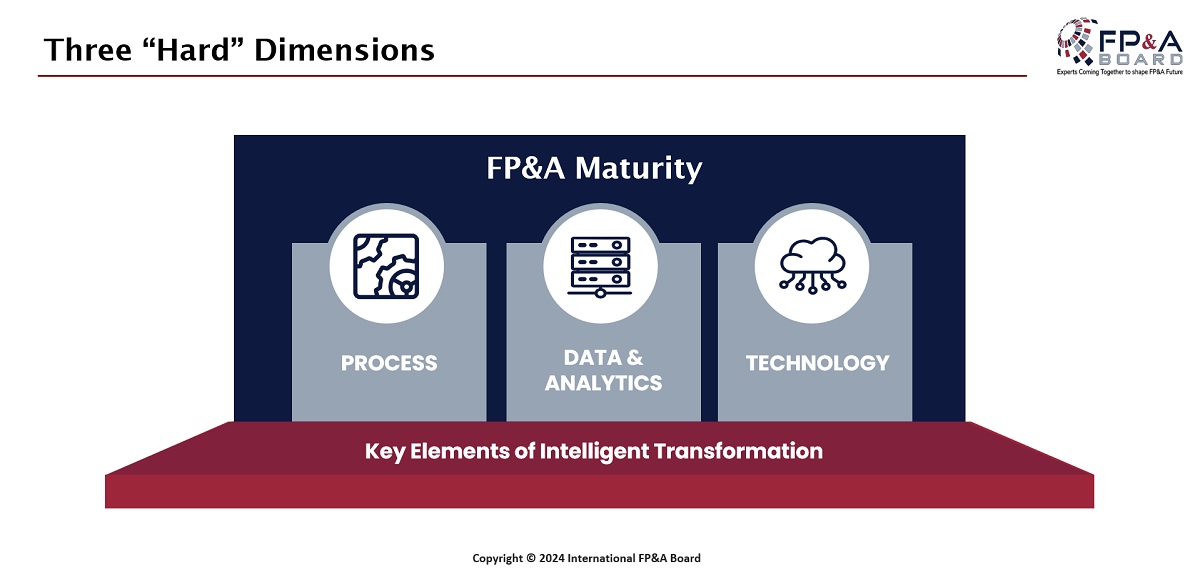
Figure 5
Data quality continues to be a big challenge for many companies, going hand-in-hand with a lack of alignment on taxonomy and definitions.
Zurich FP&A Board members also underscored that it is important to be flexible and ready for quick Scenario Planning in an uncertain environment. Unfortunately, only 16% of companies can run scenarios in less than a day, while 20% are unable to run them at all.
Group Work
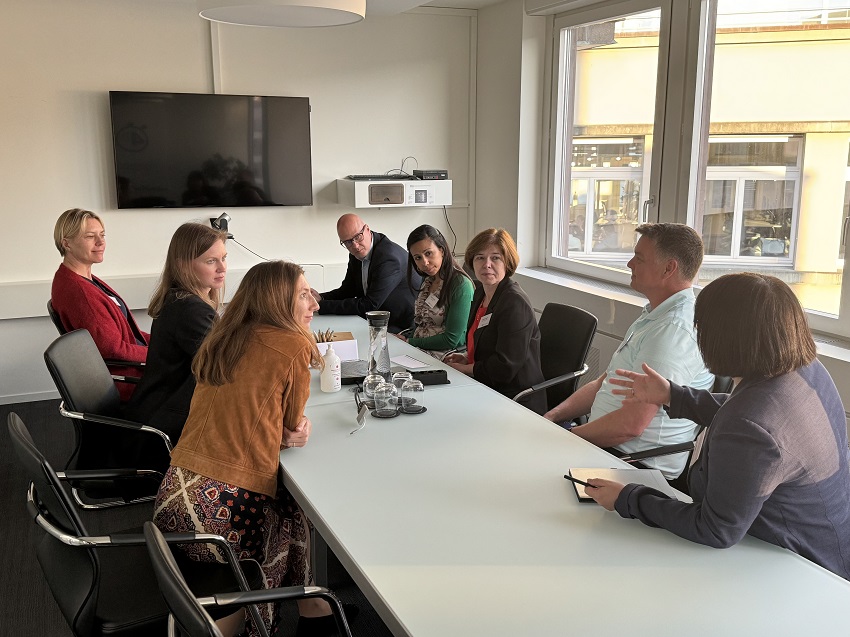
Figure 6: Group work at the Zurich FP&A Board №15, May 2024
Working in small groups followed lively discussions centred on the hard dimensions of the FP&A Trends Maturity Model. The participants were asked to discuss the three aspects of analytical transformation: Data and Models, Systems and Processes and People and Culture.

Figure 7: Group work at the Zurich FP&A Board №15, May 2024
Some of the key insights from each group are outlined below.
Data and Models
- Data governance
- Granularity of data
- Integration
- Relevant external data
- Risk analysis
- Simplification (on both global and local levels)
- Understanding business drivers
- Maintenance of models
Systems and Processes
- Make critical decisions early
- Begin with the end in mind
- Align different expectations and structures
- Have a clear vision of where you want to be
- Deal with ambiguity
People and Culture
- Talent selection
- Aligned mindset
- Define “from… to”
- Create trust
- Organisational alignment
- Rewards and recognition
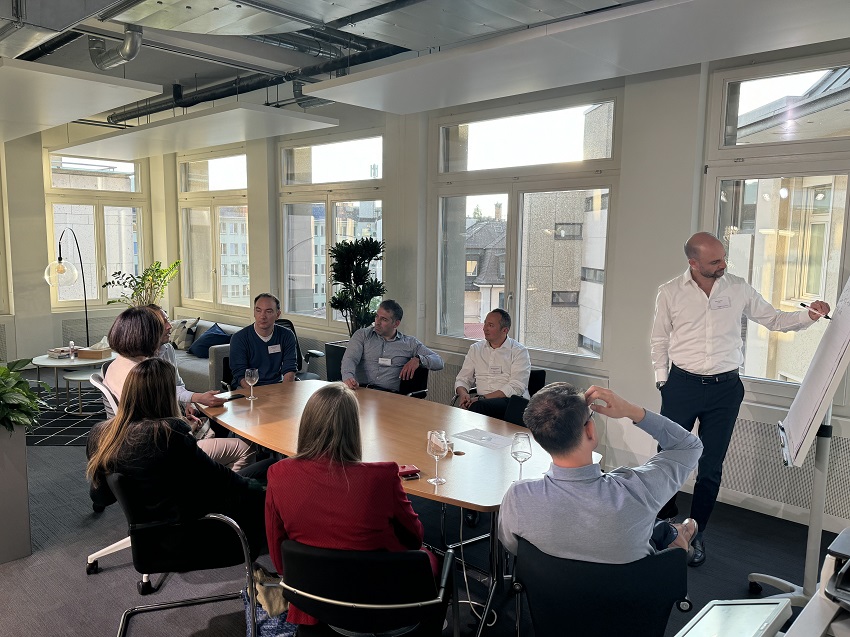
Figure 8: Group work at the Zurich FP&A Board №15, May 2024
Participants have highly appreciated the provision of open forums for sharing experiences. Each group presented findings to the FP&A Board.
Conclusions and Networking
Concluding her presentation, Larysa shared the tool to identify the stage of your FP&A maturity, which is open to all and can be used by FP&A teams. It helps us develop a transformation plan and discuss it with business stakeholders from the perspective of globally aligned approaches. The Zurich FP&A Board members found it very helpful and supportive for the general development of the FP&A function.


